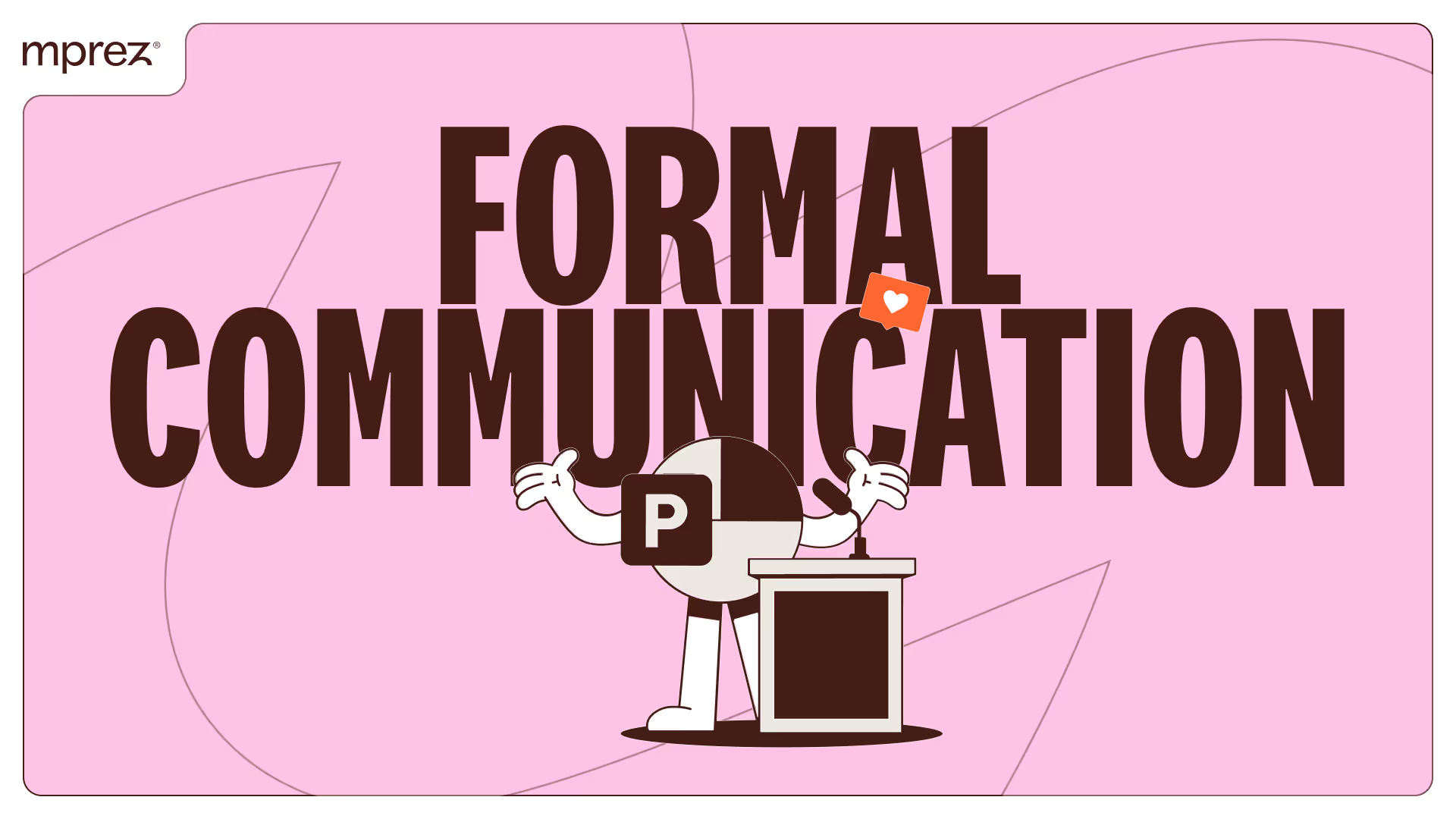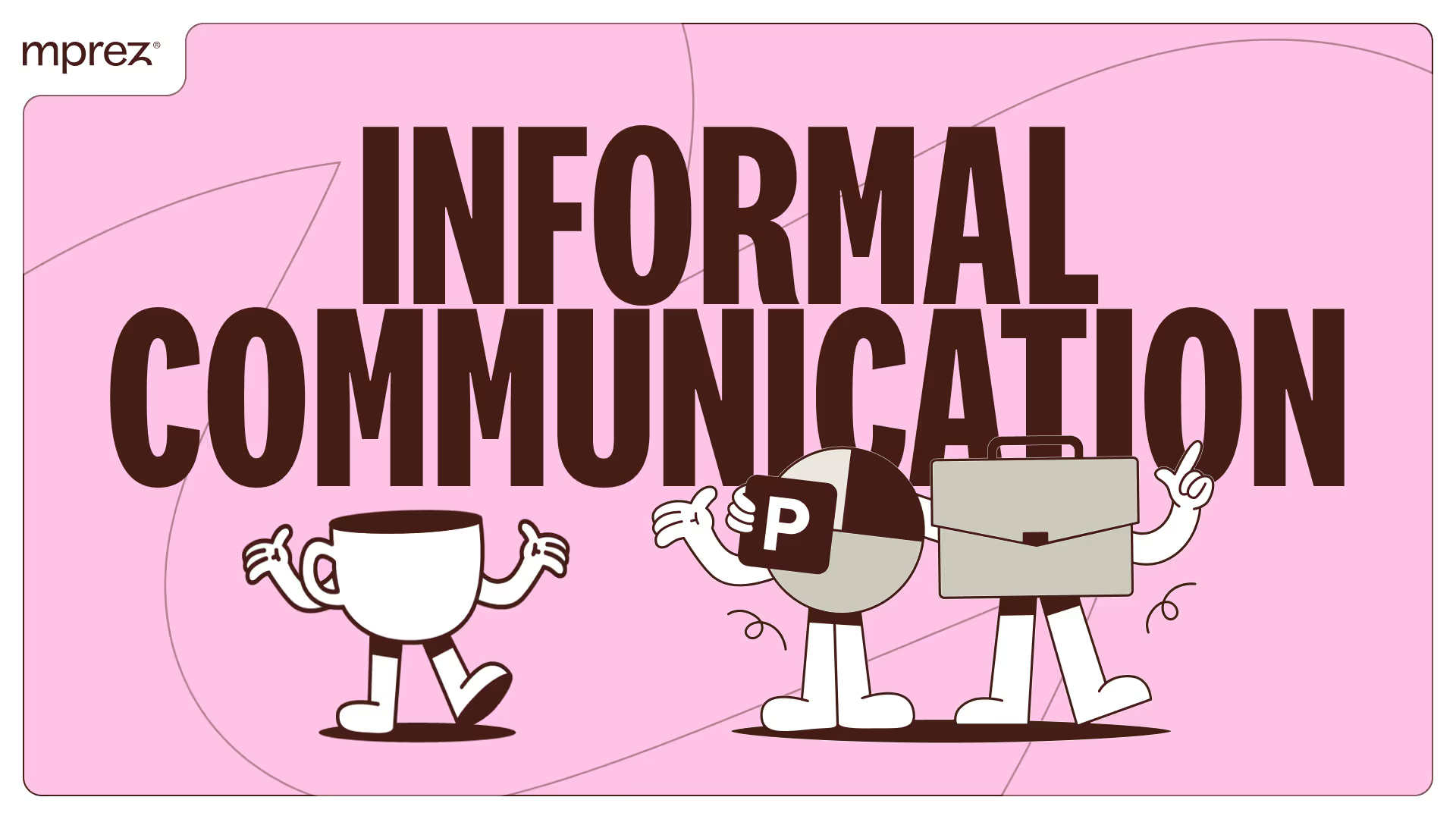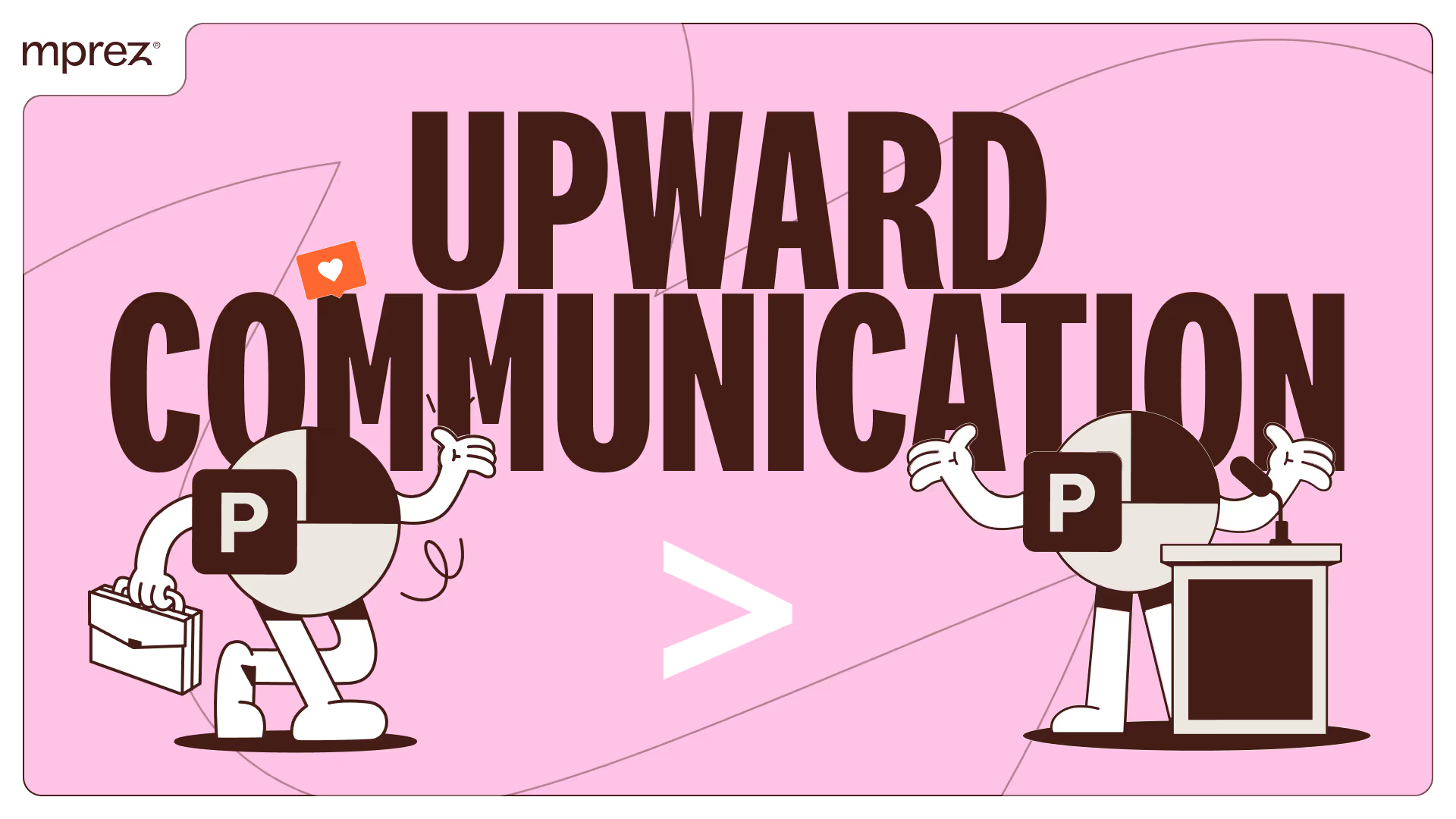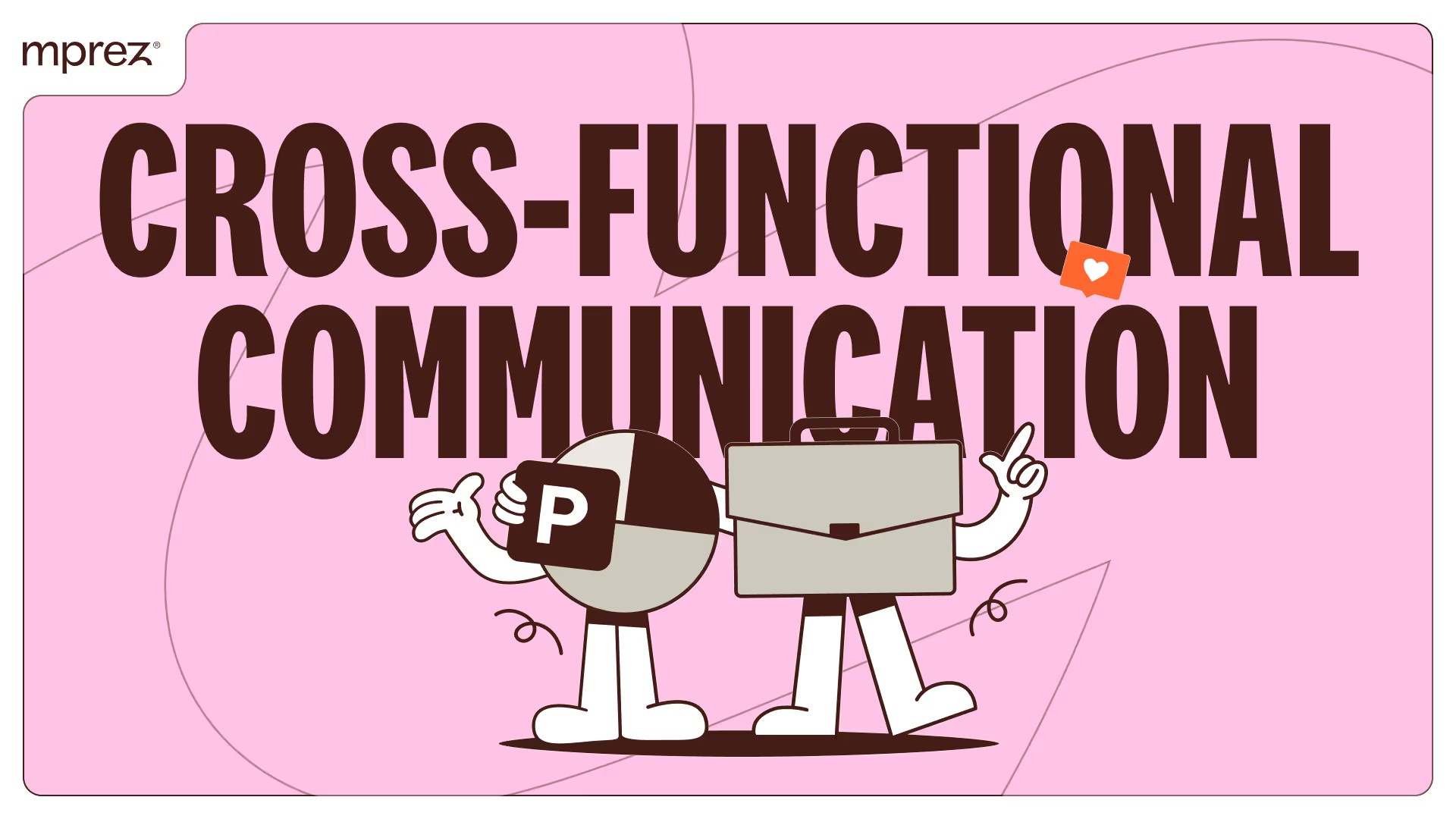Understand the different types of internal communication
To improve internal communication, we start by mastering the codes!

A company operates with clear objectives, processes, machines... and humans. Often forgotten in the equation to promote customer satisfaction and competitiveness, employees are however the ones who make the company run and without whom nothing would be possible. They make decisions, stay productive, and deliver results. In the best case, they are a source of proposals and allow the company to be raised to a higher level.
However, all this is only possible under one condition: to treat the internal communication. This communication, as opposed to external communication, aims to exchange information and impressions within a structure. It is the cement of the latter, what brings the troops together and pushes them to surpass themselves.
Thus, if you want to transcend your teams and perpetuate your company, there is only one solution: master the 6 types of internal communication in companies to perfection.
What is internal communication?
Internal communication refers to the set of exchanges of information that occur within an organization. It encompasses formal and informal messages exchanged between employees, teams, and hierarchy levels. Effective internal communication ensures cohesion, motivation and efficiency within the company. It also makes it possible to strengthen the sense of belonging of employees and their loyalty, to improve the flow of information and to facilitate decision-making. In addition, it is a great tool for promoting corporate culture, employer brand and group values.
The main types of internal communication
Formal communication
Formal communication is characterized by structured and regulated exchanges, often documented, that follow official channels of communication. It includes procedures, scheduled meetings, reports, and memos to ensure the clear and consistent transmission of information across the organization. It is often a communication used by managers to their employees to transmit instructions and clearly ensure the achievement of objectives.
Benefits of formal communication
Formal communication gets straight to the point and doesn't involve feelings. She is there to enforce the guidelines, nothing more and nothing less. Her role is to ensure that everything goes as agreed and that employees carry out the tasks imposed by the corporate vision.
In addition, it makes it possible to keep track of exchanges, since they are often memos or regulations, which facilitates audits and the follow-up of actions. It clarifies everyone's roles and responsibilities, thus reducing misunderstandings and conflicts. In addition, it ensures that critical information is communicated consistently and consistently across the organization, which helps maintain a clear strategic direction.
Examples of formal communication
Four types of formal communication should be noted:
- Scheduled meetings that highlight goals and deadlines, which provides clarity of expectations and effective monitoring of progress.
- Written reports, such as monthly performance reports sent to management, which provide traceability of information and facilitate decision-making based on accurate data.
- Internal memos, often used by the human resources (HR) department to communicate new company policies, which ensure clear and consistent communication, thus reducing misunderstandings. Employee handbooks, too, clarify roles and responsibilities, minimizing potential conflicts.
- Formal emails sent by management to announce significant organizational changes ensure quick and effective communication, documenting exchanges for future reference. These mails/emails announce, for example, a change in director, a new product orientation, a change in vision, etc.

Informal communication
Informal communication refers to spontaneous and unstructured exchanges between members of an organization. Unlike formal communication, it is not governed by specific protocols or procedures. It usually occurs naturally in small groups around the coffee machine, for example. Informal communication is what our American friends call “small talks”, these small hallway noises that are exchanged between colleagues and that can evoke gossip as well as hot topics.
Benefits of informal communication
Informal communication is flexible and fast, it has no codes. Because of its lack of a rigid process, it can sometimes be very useful for transmitting information quickly and simply while facilitating the understanding and trust of employees. Indeed, it promotes a friendly and supportive workplace and well-being at work through its relaxed aspect; it can strengthen the sense of belonging and commitment of employees, while stimulating innovation and creativity within the organization.
It does not replace formal communication when it comes to exchanging information that is crucial to the business, but it is a good complement to make certain changes pass smoothly.
Examples of informal communication
Finally, informal communication includes all types of discussions that are not conventional and not planned. Thus, we find the:
- Coffee machine conversations: It's a great time to share information about ongoing projects, discuss personal experiences, or talk about current topics. These moments strengthen the bonds between colleagues and create a more relaxed working atmosphere.
- Team lunches: this is the perfect opportunity to exchange ideas, discuss projects and get to know colleagues better in a less formal setting. Your tongue is much looser once you have a full stomach.
- Chats and instant messengers: instant messaging platforms such as Slack, Microsoft Teams or WhatsApp allow for quick and informal exchanges. Employees can ask questions, share updates, or simply chat informally, which can help resolve issues quickly and maintain smooth communication.
- Informal discussion groups: creating informal discussion groups or interest clubs within the company can encourage exchanges between employees who have common passions or hobbies. For example, a book club or sports group can bring employees together around shared interests, facilitating informal communication.
- Social events and team buildings: what better than evenings, barbecues or team building activities can encourage a sense of belonging and quality of life at work? These events allow employees to relax, get to know each other better and boost team spirit.
- Direct and instant feedback: managers are the first pillars of informal communication and can trigger it by offering direct and instant feedback during daily discussions. This can be done during office walks, impromptu encounters, or hallway discussions, creating a culture of open and accessible communication.

Upward communication
Bottom-up communication refers to the flow of information that comes from employees and up to higher levels of hierarchy within the organization. This form of communication allows employees to share ideas, concerns, suggestions, and feedback with management. It plays an important role in decision-making, as it provides managers with information about daily operations and employee morale, which is direct feedback from the field. It requires an open company culture where employees feel safe and valued when they share their opinions.
Benefits of bottom-up communication
Upward communication therefore allows employees to express themselves directly about their working conditions and needs. They reflect the realities on the ground and the motivations of each individual, which then makes it possible to adapt certain aspects and subsequent decisions. Effective bottom-up communication helps identify problems before they become critical, improve internal processes, and strengthen trusting relationships between employees and management.
Examples of bottom-up communication
Several methods can be used to promote bottom-up communication:
- Regular meetings: local management makes it possible to maintain a constant exchange, whether ascending or descending, and thus not to miss any information that is valuable to the functioning of the organization.
- Internal surveys: to regularly find out the opinions of employees on various topics.
- Idea boxes: digital or physical, they are an opportunity to collect concrete and useful ideas for employees. You can make them anonymous to promote the expansion of speech and free exchanges.
- Performance reports: in order to reassess objectives and assistance as needed.
- Individual interviews: to stay in touch with employees and set up personal events.

Downward communication
Downward communication is the opposite of bottom-up communication and is defined as the flow of information that comes from higher levels of hierarchy and down to employees. It is characterized by formal, structured and often documented exchanges, and follows official channels of communication (it is therefore formal communication, most of the time). This type of communication is generally initiated by management or managers to convey directives, policies, goals, strategic decisions, operational instructions, or important updates to employees.
Benefits of top-down communication
Top-down communication is there to ensure that everyone in the organization is aligned with business goals, understands expectations and responsibilities, and has access to the information needed to complete tasks effectively. It also plays a role in disseminating the vision and values of the company, thus contributing to the cohesion and commitment of employees.
Examples of top-down communication
Various channels can be used to set up effective top-down communication:
- Team meetings: they are a good way to bring together all the actors in a project and determine the objectives and tasks to be pursued. They can be short or long (the short format, less than 30 minutes, is still preferred so as not to lose the attention of your employees), formal or informal.
- One-on-one interviews: These interviews work for both bottom-up and top-down communication and allow for personal feedback on the employee's accomplishments and upcoming tasks.
- Memos: It's a quick way to communicate important information in a formal and structured way. They can be distributed as a paper document or via official emails.
- Internal newsletters and newsletters: these periodical documents distributed within the company inform employees of important news, updates, and events. More informal, these biases make it possible to communicate to employees all the company's news, such as new contracts, hires and departures, upcoming events, etc. It is the ideal tool for maintaining transparency and strengthening trust and cohesion.
- Speech: via videoconference, webinar or meeting, executive speeches are the way to transmit key information for the achievement of global goals and to motivate teams.

Horizontal communication
Horizontal communication refers to the exchanges of information that occur between employees or teams located at the same hierarchical level within an organization. It can be formal or informal depending on the relationships between each person and the objectives to be maintained, and facilitates cohesion since it does not involve any hierarchical relationship. However, if it is not favored, it can quickly stagnate and relationships can deteriorate.
Benefits of horizontal communication
This type of communication enhances collaboration between teams and departments, mutual understanding and cohesion between colleagues of the same rank, and is essential for effective teamwork, innovation, and collaborative problem solving. In addition, good horizontal communication is the pillar of employee satisfaction, to promote a collaborative and inclusive work environment, as well as the sharing of best practices and collective and continuing training.
Examples of horizontal communication
- Project meetings and working groups: During meetings, team members share their progress, discuss obstacles, and plan next steps. This ensures that all members are on the same page and working towards a common goal. The same applies to working groups; small teams at the same hierarchical level work to solve specific problems or develop initiatives, which makes it possible to exploit collective expertise and generate innovative ideas.
- Collaboration platforms: thanks to Slack, Trello or Microsoft Teams, communication and collaboration can be facilitated in real time. These tools allow employees to share files, discuss projects, and coordinate their efforts more effectively.
- Lunches and coffee breaks: These are informal moments where employees can informally discuss their projects, exchange ideas and strengthen their interpersonal relationships. These relaxing moments can often lead to productive exchanges of ideas and better mutual understanding.
- Team building events: Organizing team building events where employees can interact informally, strengthen relationships, and develop better mutual understanding promotes collaboration and horizontal communication by creating a positive and supportive work environment.
- Cross-training: Setting up cross-training sessions where employees can learn from each other helps develop a broader understanding of each other's roles and responsibilities, thus facilitating horizontal communication. For example, PowerPoint courses can be ideal for enriching everyone's skills and becoming more efficient in meetings, which creates a virtuous circle.
- Corporate social networks: Internal corporate social networks encourage the exchange of ideas, informal discussions, and collaboration between colleagues. These platforms can serve as a place for sharing information, questions and answers, and for strengthening interpersonal relationships.

Cross-cutting communication
Cross-cutting communication goes beyond hierarchical levels and departments, involving a interaction between services and inter-levels. It aims to facilitate collaboration between the various departments of a company and innovation by allowing smooth interaction and the sharing of knowledge between the different parts of the organization.
Benefits of transversal communication
First, it promotes collaboration between different teams, which makes it possible to share a variety of skills and resources. Second, it stimulates creativity from diverse perspectives, which can lead to innovative solutions. Third, it improves mutual understanding and reduces organizational silos, making processes more fluid and harmonious. Finally, it contributes to an inclusive corporate culture where each employee feels valued and listened to.h4: Examples of transversal communicationVaried teams can be required to work together through many types of projects such as:
- Development of new products
When the company is working on the development of a new product, different departments should be involved from the start, such as the marketing team and the research and development (R&D) team that can operate together to identify market needs and current trends. At the same time, the production team can provide feedback on technical feasibility and manufacturing costs, while the sales team can offer perspectives on how the product will be perceived by customers.
- Integrated marketing campaigns
A successful marketing campaign requires the cooperation of multiple departments: the communications department can work with the creative department to develop consistent visuals and messages, the public relations team can coordinate with the media to ensure adequate coverage, while the sales team can prepare special offers and promotions to accompany the campaign.
- Improvement of internal processes
To optimize internal processes, a company can form working groups composed of members from different departments. For example, a cross-department team can review the order processing cycle to identify bottlenecks and suggest improvements. Members of IT, logistics, and accounting can collaborate to implement new technology solutions that automate tasks and improve overall efficiency.
- Organization of internal events
To strengthen relationships between employees, organizing events such as team building days, training workshops, or seminars can be a great opportunity for collaboration. The human resources department can coordinate with the operations department for logistics, the communications department can coordinate with the operations department for logistics, and the finance department manages the budget.

Create an effective internal communication strategy
Analysis of internal communication needs
All the communications presented are complementary. One does not hunt another and none is a better solution than its neighbor. Of course, it is sometimes difficult to conduct all of these types of communication on the same front. It is very likely that right now, you will prefer one, and it is very likely that in the future, you will prefer some over others.
This is not important, because what matters is above all to meet the needs of your business. To do this, you need to analyze the goals and processes of your structure and adapt communication to them.
Are you a startup with few employees? Your company must favor informal, horizontal and transversal communication to align with the ethics and values of your small structure.
Are you a large group divided into various sectors on several sites? Perhaps formal upward and downward communication would be more appropriate to get your information across to all employees.
List and break down your needs in order to be able to meet them naturally and effectively and, above all, stay in line with your values, your CSR policy and the ethical aspects that you support.
Use of appropriate communication tools
Numerous communication tools are possible to facilitate transparent and trustworthy communication.
You can use physical tools/processes such as:
- The meetings
- Corporate newspapers
- Team buildings
- The lunches
- Idea boxes (also possible digitally)
Or digital methods:
- The newsletters
- Slack or Confluence for smooth communication
- Microsoft Teams, Zoom, Skype, or Google Meet for meetings
- Trello, Notion, Basecamp, or Asana for project management
- The Intranet to aggregate and store all essential information
Use the ones you're most comfortable with and that help your teams the most. They need to be easy to handle for anyone, regardless of skills and age, in order to avoid discrimination linked to digital tools.
Assessment and adjustment of the strategy
To measure the effects of your communication strategy, you can:
- Ask for feedback from your employees, to be as close as possible to reality and adapt your communication plan as needed.
- Carry out internal audits through your communication department or your Human Resources department, or external audits through consultants outside your company.
- Set up digital or physical idea boxes to gather the opinions of your employees and develop your communication proposal.
- Evaluate the increase or decrease in productivity, since effective communication normally makes it possible to increase it significantly, because dialogues between people and services are facilitated and errors are fewer thanks to better understanding.
- Evaluate absenteeism and turnover, because good communication serves your employer brand and the development of your employees in your company.
Conclusion
In summary, internal communication is essential for the success and sustainability of any business. It ensures the cohesion, motivation and effectiveness of teams by promoting clear and constant exchanges at all hierarchical levels. Well-controlled communication strengthens corporate culture, improves transparency, stimulates collaboration, and increases employee satisfaction. Investing in an adapted internal communication strategy is therefore crucial in order to create a harmonious working environment and to achieve high and sustainable performance. Different types of communication exist and can coexist, although it is difficult to apply all of them uniformly. These communication methods make it possible to support the human strength of a company and are one of the pillars of organizational success, because uniting employees around common objectives is an essential quality of a sustainable and solid company.
sourcing :
Slack — Types de communication interne
Efficy — Types de communication interne
Ce qu'il faut retenir
- Use different types of internal communication to meet your needs
- Do not neglect any form of communication and, in all cases, use both upward and downward communication.
- Measure the effects of the internal communication strategy and adjust it as needed
- Well-controlled internal communication strengthens corporate culture, improves transparency, stimulates collaboration and increases employee satisfaction, thus contributing to the success and sustainability of the company.



